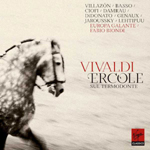This review page is supported in part by the sponsors whose ad banners are displayed below |
 |
 |
|
A014 vs Triode Lab EL84TT. As a very recent recipient of our Blue Moon award I wanted to compare the little Canadian 6-watt amplifier to the over twice-as-costly 8-watt Japanese. I was not disappointed. As already indicated the EL84TT is extremely quiet. On that count no comparison was possible. Although clearly not as resolved or illuminated in the midrange, the lower noise floor all by itself made for a quite involving listening experience. When it came to the triode effect, the EL84TT sat squarely between the Yamamotos and F5 - more fluid and three-dimensional than the latter, less so than the Japanese amps.
|
Where the A014s clearly pulled ahead was with the lit-from-within midrange quality that revealed more insights into the musician's art. Conversely the A014 couldn't offer the slam and weight in the bass that the Canadian does nor its ability to better differentiate big orchestral masses, making the latter the usually better choice on modern music and larger orchestral groups. Interestingly neither were stellar at whisper levels, the EL84TT because of its slightly more closed-in sound, the A014 because of its higher noise floor. By this measure, the F5 won.
|
|
|
|
 |
With the Ocellia Calliopes the A014 behaved more like a midrange magnifying glass whilst the EL84TT offered a more relaxing holistic listening experience, less in your face with emotional intensity but also less musically revealing. Overall it was the better all'rounder. If you want 300B expressivity at its extreme, the Yamamoto is king. To overdraw, I would pick the Yamamoto to dive deeply into Vivaldi's Ercole opera and the Triode Lab EL84TT to tame Musica Nuda's unconstrained intensity.
|
|
|
|
|
Although the Ocellia 300B Quaero integrated departed a few months ago, its qualities still sat pretty vivid in memory. The all silver wiring, systematic elimination of synthetic materials, Black Treasure tubes and overall design painstakingly refined over a decade yielded a fuller more alive sound than any of these amplifiers but with slightly less control in the bass than any of them except the A08s. The Quaero amplifier was designed to deliver the complete experience and suspend disbelief with acoustic classical music and small jazz ensembles. With the Calliope speakers it does that amazingly well. The A014 on the other hand is probably even more SET-ish in its spotlighting ability but not as elaborate or refined in the pursuit of absolute tonal realism. What the Yamamoto does is serve a full helping of SET magic with better than average bass control for the breed at the expense of a higher than desirable noise and a set of features (or lack thereof) that could be impractical for some systems.
|
 |
|
Although I use the Calliopes to assess the sound of amplifiers as they are far more neutral than my Zu Essence, I decided to set up the American speakers to see whether they'd make a better match for the A014. Indeed so. Their denser meatier sound accommodated the A014's open lively and dynamic midrange to provide a balanced sound. Their lower sensitivity helped with noise, making the issue far less relevant. The A014's 8 watts were plentiful to get the Zus under control and never sound strained whereas the tiny 2 watts of the A08s always reached their limit on large orchestral and moved into heavier distortion when the playing got tougher. The Zu combination shone on jazz and country but also yielded some very nice results on classical music both large or small. The Zu weakness is the midrange which is not as resolved as you would ideally like for classical enjoyment. Since the A014 excels at it, the combination ended up being quite delightful - not as revealing and insightful as the Ocellias but intense and captivating nonetheless.
|
|
|
|
|
|
All in all, the Essence proved to be more forgiving mates for the Yamamoto. It's an association I would encourage people to explore. Very revealing higher sensitivity speakers like Ocellia, Rethm or Avantgarde will probably prove too challenging for the A014 unless you find a way to address the noise to your satisfaction.
As Srajan concluded, this is an amplifier for somebody who has been through the roller-coaster of audio and finally settled on one source, one sound, one aesthetic and is willing to work around the constraints of such a choice. As much as I admire Yamamoto's work and amazing craftsmanship, I wish I could give the A014 a stronger endorsement. In truth and more so than any other amplifier I've heard, this one requires that prospective buyers assess it in their system and against their own expectations to decide if they can live with its limitations to enjoy its strengths. If yes, the A014 offers a huge helping of modern 300B sound at half the price of Yamamoto's other 300B solution. For that reason alone it's well worth the effort to check it out. |
|
 |
 |
|
|
 |